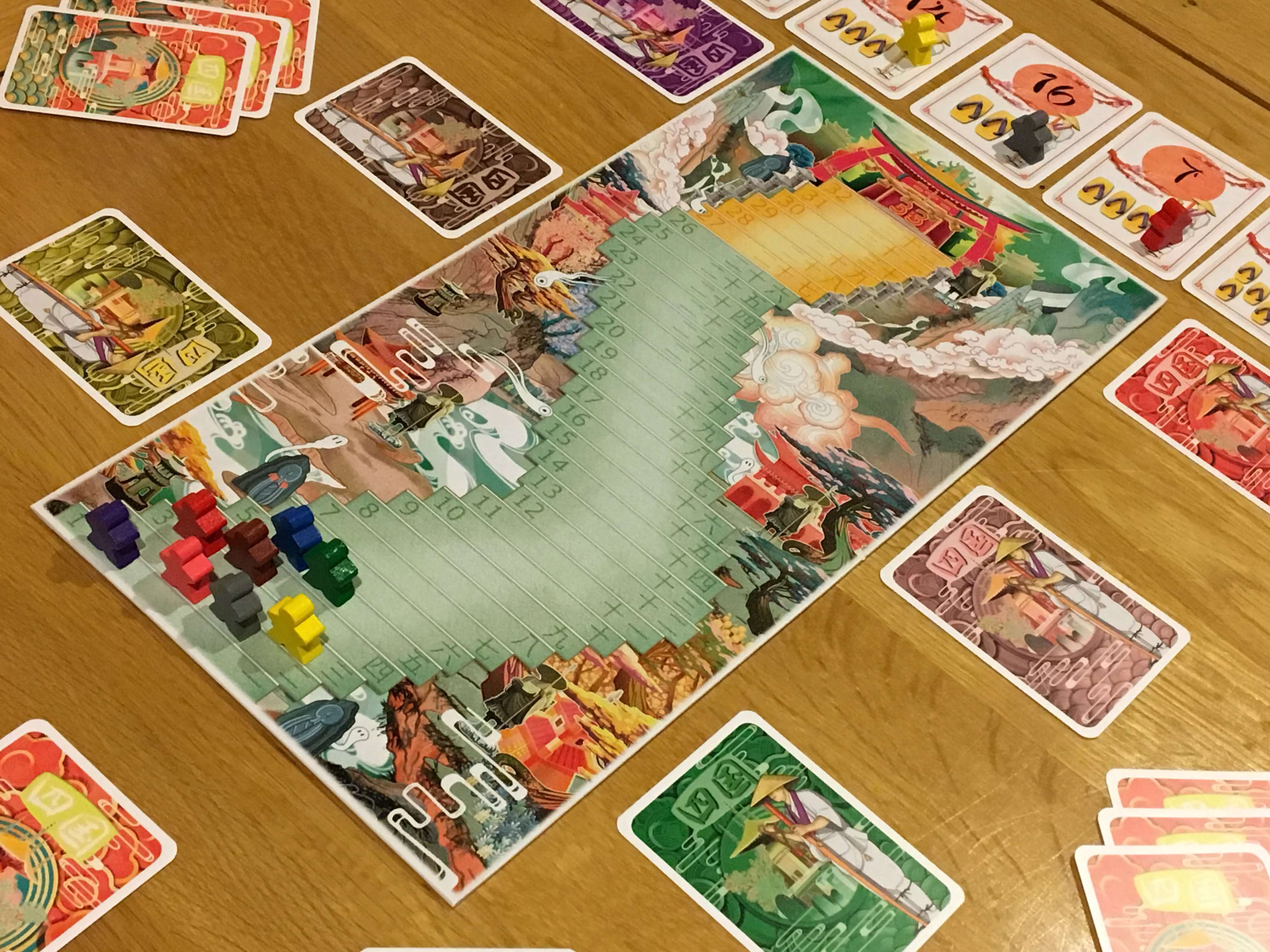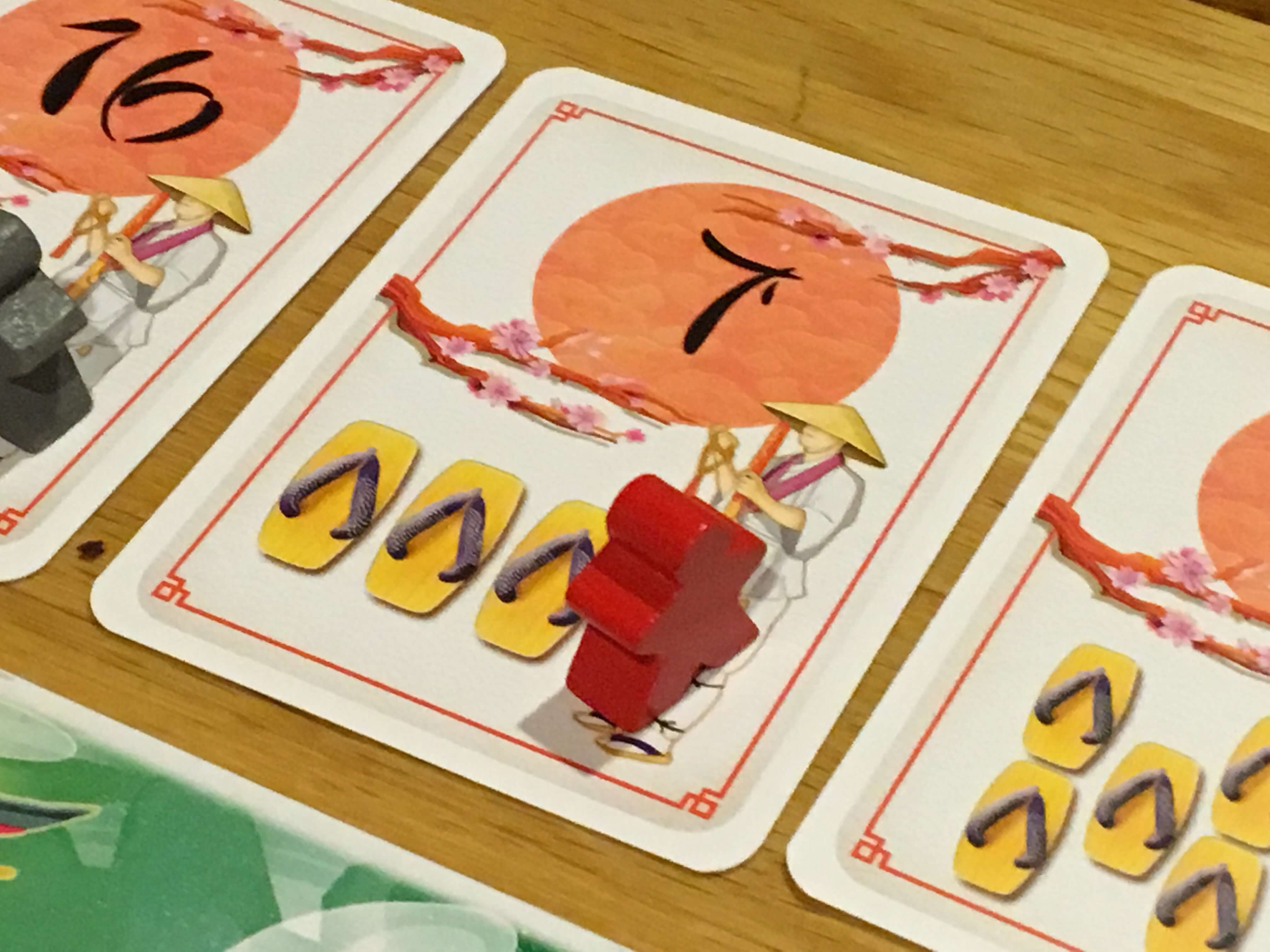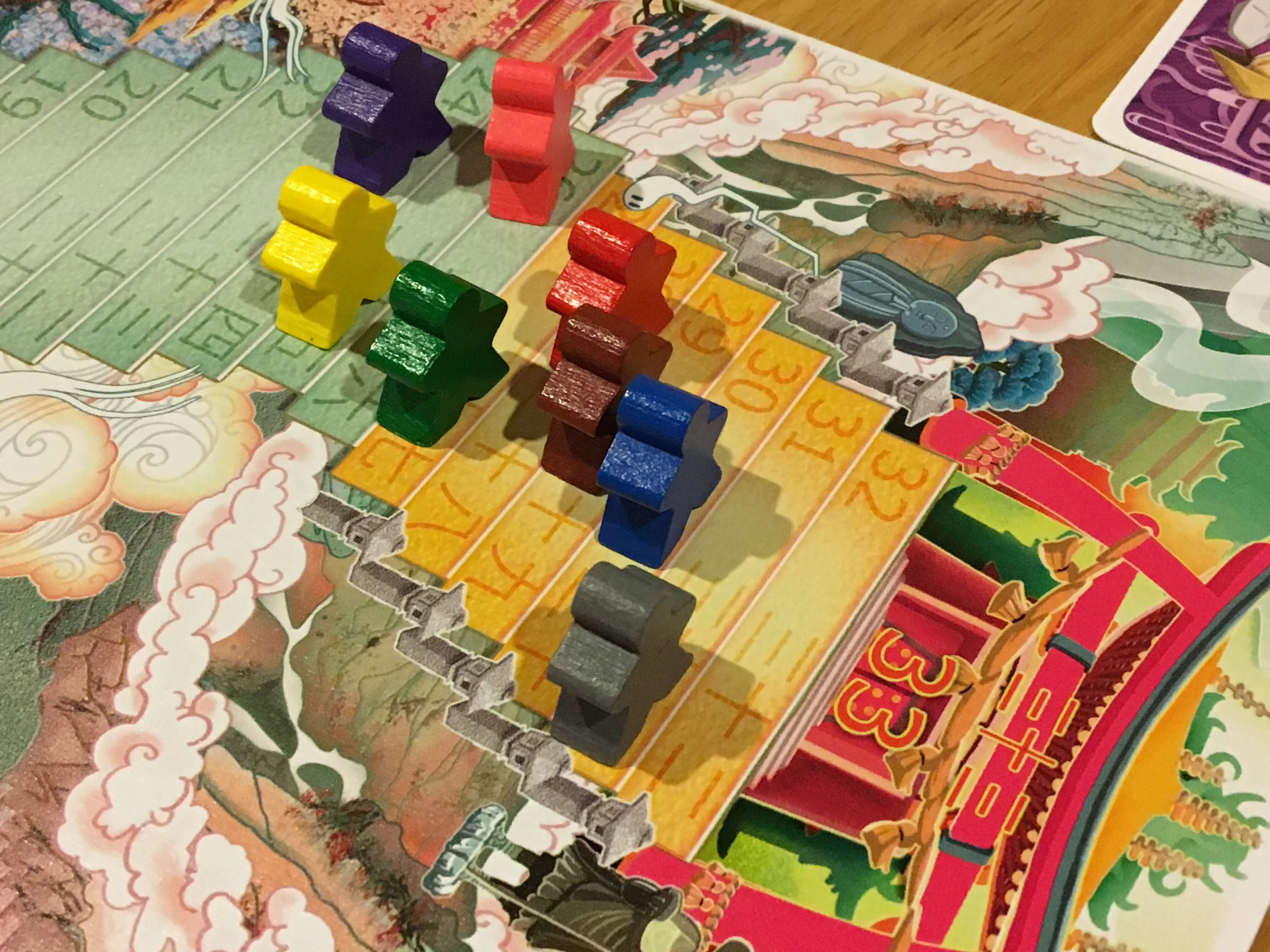Shikoku review — Stairway to heaven
On the Japanese island of Shikoku, pilgrims visit each of the island’s 88 temples as they seek the path to enlightenment.
- The story of the game Shikoku centres on the twenty-third temple, Yakuōji which is said to prevent misfortune in men and women of certain ages. The game features the stairway to the summit of the temple, but no pilgrim wishes to arrive first or last. Can you follow the path of moderation and achieve enlightenment?
Overview and turn structure
Like several of the other GDM Games products that we’re working on, Shikoku is a relatively short, straightforward game that links its mechanics and its theme directly to keep players engaged for the half an hour or so that each game lasts. Despite its independent roots, Shikoku is one of the most beautiful games that I’ve played in the latter half of 2018, with artwork that is truly a sight to behold. Not only that, it’s probably the only “proper” board game that I can recall which supports as many as eight players, without sacrificing any element of its gameplay.
Based on the central idea that it is never good to be first or last, Shikoku will be won by the two players who reach the temple second, and second from last. The victory will always be shared in a game with five or more players. At three players, the individual who comes second will win – because they are between the others, whilst at four players, again only second place will win. The importance of position in the mantra line is also important for determining movement during turns and although this will be a little hard to explain in writing, I’m going to give it a go!
In short, each player will be dealt a hand of three cards. From those cards, they must pick one and place it at the top of the board with one of their meeples on it. Each card features two areas of interest — a number against a red sun, and one or more sandals. As each player places their cards (based on the order set in the last round) they will be sorted by the number shown against the sun, from lowest on the left to highest on the right. Once all of these cards are placed, each player then moves their other meeple (on the staircase) up the number of stairs as depicted by the sandals on the card they played. The two meeples that do not move are the two that were positioned second and second last.
Player order is then reversed for the next round, with the player who came last then choosing one of the cards that was played in the previous round to put back into their hand. That player will then choose one of their three cards and play it, restarting the next round. Play continues like this until one player reaches the top (which they will usually be reluctant about) at which point the game ends. Players in winning positions when this happens will be considered the winner(s.)

Components
Shikoku is a truly beautiful game, with highly individual artwork on the board and each of the cards. The meeples will look familiar to anyone who has played a modern eurogame before, but they are the only component that isn’t highly customised for this experience and very much on theme. Irrespective of whether they are custom pieces or not, they look fantastic scaling the staircase of Shikoku‘s incredible board. Artist Amelia Sales has done a truly remarkable job there and there’s a real sense of wonder when examining the finer details.
The cards are also just as beautiful, with the clear numbering on the rising sun of the Japanese flag, with details showing cherry blossom and the pilgrims that the game centres on in the foreground. The sandals are an immediately recognisable way of understanding how far you’ll move each turn, which ensures that nothing here is form over function. There are other supporting cards to show who is who, and whilst these serve little gameplay purpose, they also look fantastic.
As with other GDM Games productions that I’ve played, the instruction manual is not amazingly well translated and because the second place/second last mechanic is an unusual one, I did need to reread the rules a number of times. With that said, it’s not that the translation is bad, it’s simply that I needed to visualise what I was doing by working through the steps slowly and playing a few trial turns. Once you get the hang of it, Shikoku is incredibly simple to learn, teach and play.

Game experience
Whilst Shikoku is only ever going to be a relatively fleeting gaming experience that fills in the time between other, longer games, but it’s always fun to bring it to the table. In particular, it works well whilst setting a game night up, since it’s quick and supports a very broad range of player counts, so what might be a three player game at the beginning can be a four or five player game as more people arrive, before everyone then breaks into smaller groups to play whatever the focus of their evening will be.
Shikoku is actually quite difficult to win, despite its apparent lightness and players will need to consider a few things. The first is that there is no inherent ability to be certain about where you’ll end up in the order, so balancing the number of sandals shown on a card against the likely position you’ll end up in is important. A five sandal card that looks likely to put you into second (or second last) place is a risky play, because whilst you might be aiming not to move, you could end up way out in front – or if you did want to move and end up in second place, you might be a long way behind come the next turn.
A key part of managing these dilemmas is in trying to keep some form of a read on which cards your opponents have in their hands. Only the player in last position draws a fresh card, everyone else will pick up a card from the previous mantra line. This means that you’ll always have some information about what their hand is like. If you can track this back two or three turns, you might just be able to pinpoint exactly what one or two opponents have in their hand. Weighing this against your own position in the turn order can mean that you have a viable tactic for at least the next turn.
There is a slight oddness to the fact that no one ever outright wins and that the exact moment of victory always comes because of someone else’s action, but since all of the moves are visible at the same moment, it’s not like you can win the game without acting in the last turn – you do still need to engineer a slow paced move, or no move (or whatever else was required) to ensure your finishing position. It’s an unusual way of playing, but it’s also a very interesting and enjoyable one.

Conclusion
In summarising my thoughts on Shikoku, I’d say that I feel quite positive about it overall. It’s a small, light game that can be understood by anyone and played by a large audience, with little to no downtime at any point. It feels odd that the win is almost always shared, but since that only applies to five through to eight player games, it’s actually not such a bad thing since it leaves fewer players disappointed. That said, I think I might prefer Shikoku at about five or six players, simply because I don’t like the fact that there are so few “unknown” cards at seven or eight.
Shikoku has a theme you won’t find anywhere else, combined with an interwoven mechanic that is creative and unusual. Like GDM Games and designer Eloi Pujadas’ other games, Shikoku is therefore a very innovative and intriguing design that won’t be loved by everyone, but which nonetheless deserves the time and respect of at least giving it a go.
A copy of Shikoku was provided for review purposes. You can find out more about it on the website of publisher GDM Games.

Comments are closed.